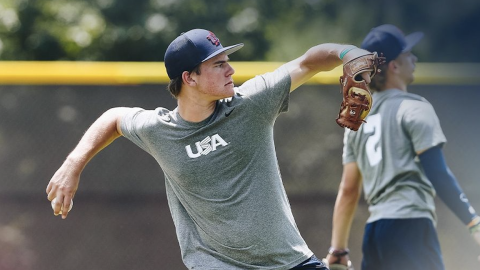Every member of athletics organizations should understand signs and symptoms of heat illness.
Aug. 12, 2021
Exertional heatstroke remains one of the leading causes of sudden death during sport; however, it is preventable if the signs and symptoms are quickly recognized and properly treated.
With pre-season training underway and nearly 200 million people in the U.S. under some sort of heat advisory this week, it is imperative for every member of an athletics organization to understand these signs and symptoms to ensure student-athlete well-being. While some might assume medical staff take sole responsibility for student-athlete health, recent litigation has shown coaches and administrators are also liable for the health and safety of athletes.
Although the specific symptoms vary across the spectrum of heat-related illnesses, possible heat exhaustion signs and symptoms are listed below. If not addressed quickly, heat exhaustion can lead to heatstroke, which can be deadly.
- Cool, damp skin with goosebumps when in the heat
- Excessive sweating
- Faintness
- Dizziness
- Fatigue
- Weak, rapid pulse
- Low blood pressure upon standing
- Muscle cramps
- Nausea
- Headache
This list is not exhaustive and does not serve as formal education. Thorough education for coaches, athletes, support staff and medical staff around heat illness must occur annually and include:
- understanding when it is safe to conduct a workout
- how to recognize signs of heat illness and initial treatment
- the importance of on-site medical supplies specific to the weather
- venue specific emergency action plans
Organizations should be able to show proper education has occurred for these stakeholders on a yearly basis.
At USCAH, we fundamentally support the NCAA best practice guidelines calling for medical staffs to practice independent medical care with full medical autonomy – the unchallengeable authority to determine medical management of athletes. For example, if a primary athletic health care provider deems conditions are too dangerous because of temperature or lack of available equipment such as ice tubs, a workout must be stopped. These decisions should be made to protect the student-athlete and should not be challenged or disregarded.
This model ensures independent medical care by giving primary athletic health care providers – defined as team physicians and athletic trainers – complete authority to make decisions regarding the health and safety of athletes without the influences of the athletic department, including coaches and other personnel. Autonomous authority is the foundation for independent medical care for student-athletes.


